How To Use Growth Hacking To Attract and Retain Customers
Today, let’s talk about growth hacking.
Every business owner will do whatever needed to grow their business. Today, we have at our disposal more information, tools, resources and skill sets than ever before. How do you take advantage of all of these assets to grow your business?
Finding innovative ways to get things done, in order to achieve a definite result is the job of a hacker. Growth hacking was first used by start-ups to achieve significant growth rates for their businesses.
In 1996, co-workers Sabeer Bhatia and Jack Smith built a web-based email system (Hotmail). And, within 6 months, they had their first 1 million users. By the time they sold it to Microsoft 17 months later, they had clocked 12 million users.

How did they achieve this significant growth within a short time? That’s growth hacking at work. And, you’ll learn all about it in this article.
Download this massive list of 60 essential tools for growth hackers at start-ups.
Step #1: Getting Started with Growth Hacking
In today’s competitive environment, successful business owners must constantly adopt and adapt strategic methods for getting the results that they want. When that goal is business growth, owners can look to highly creative and analytical strategies and tactics, all in the service of growing the business.
That’s what the term “growth hacking” means, at its most basic level.
There is a growing community for growth-focused marketers. A special growth hacking conference, held in October 2014, proves that growth hacking is no longer a phenomenon that you can ignore.
Introduction: The term “growth hacker” was initially coined by Sean Ellis, founder of Startup-Marketing. He explained the concept using this startup growth pyramid.

In order to achieve a growth rate above the industry average, a growth-hacking business combines effective marketing with engineering.

Some people believe that growth hacking is just a new buzzword to replace the term “inbound marketing.”
But, I think there’s a difference.
Inbound marketing takes an internet marketing strategy and aligns it to the target audience.
On the other hand, growth hacking may not involve any of the internet marketing strategies that you already know. A growth hacker could invent a new idea or strategy, or just take an existing idea and create something more powerful out of it.
What do you think: Is growth hacking the new inbound marketing?

In many ways, being a growth hacker is totally different from being a “typical” Internet marketer.
What is Growth Hacking? The word “growth” means increase and expansion. If your online business earned $100,000 in 2013 and then you earned $150,000 in 2014 — that’s growth.
The word “hack” traditionally means to cut away through obstruction — as in, “I had to hack my way through the crowd at the shopping mall to check out new arrivals.”
But, for our purposes, we’re talking about another definition of “hack” — not
Writing malicious scripts or codes to infiltrate an individual or company’s database or website
But instead…
An effective, creative solution to a problem.
Growth Devil has a more detailed definition:
Growth hacking is basically a way that very small or brand-new companies use analytical tools to analyze who is using their product, and how, and then relentlessly pursue growth for their businesses.
And, Tech Beach sees growth hacking as…
A marketing technique initially employed in tech startups that uses creativity, social metrics and analytical thinking as well as tools to sell products and gain exposure stationery.
Therefore, growth hacking combines the use of technical skills and creativity to develop and execute marketing practices with a primary focus on growth. I’ll show you a few examples of growth hacking as we go along.
Growth hackers consistently ask “how will this decision impact my business growth?,” whenever they’re faced with a new tool or strategy.
Who should use growth hacking? Growth hacking is a powerful concept that works for smart marketers of all kinds, not just for technology start-ups. Ideally, you’ll incorporate growth hacking into your marketing plan, as Xen suggests.

Who specifically can benefit from growth hacking?
- Start-up business: At the early stage of a start-up, what you should pay attention to is creating that all-important first impression to inspire customers and clients to trust your brand. When they feel that trust, they’ll buy your product or service and they’ll refer others to your business. Growth hacking can help you create that impression immediately.
- B2B marketers: A whopping 68% of B2B organizations have not identified their funnel yet. If you’re targeting other businesses, growth hacking will streamline the entire process for you and you’ll ultimately close bigger deals through a funnel that centers around a great customer experience.
- B2C marketers: Many information marketers, authors, bloggers, public speakers, email marketers,and consultants fall into this category. For these folks, growth hacking will help define the business’s ideal customer, which then makes reaching and converting them into purchasing customers and clients much easier.
- Content marketers: If you rely on articles, blog posts, short reports, ebooks, white papers, podcasts, videos, infographics or other types of content to drive traffic, leads and customers to your business, then growth hacking can help you by increasing that flow of potential business.
- Social media experts: According to HubSpot stats, over 50% of all marketers use social media for six or more hours each week. This is real and difficult work. Growth hacking can help youm by eliminating the uncertainty from your efforts and converting social media leads into customers.
Growth hacking myths: With the difficulty in defining just what growth hacking is, it might not be surprising that some myths have popped up around the phenomenon. Here are a few that are particularly widespread:
Myth #1: You have to get certified to become a growth hacker – This is far from the truth. Sure, a growth hacker should be qualified and skilled in the areas of creative thinking and innovation, but those are both fairly relative and subjective areas.
The truth is that most managers and internet marketers possess the basic skills necessary to be a growth hacker.
Myth #2: Spend money to make more money – A lot of internet marketers and marketing consultants teach this. Direct mail marketers and copywriters agree that before you can grow your own business, you have to be prepared to spend sizable amounts of money.
However, as Sean Ellis himself agrees, some of the best growth hacks are often completely free. Check out the distinction between traditional and growth hacking tactics illustrated below:

That doesn’t mean that growth hackers never spend money on marketing how can I download faster on steam. But, you can have tons of money, invest it wisely in a lead generation channel and still fail. A growth hacker looks beyond the marketing budget and focuses instead on marketing’s impact on growth.
Myth #3: Growth hacking is the same as marketing – On the surface, this might seem true. After all, acquiring customers and retaining existing ones is the #1 goal of every start-up or digital company. However, there are some core differences that you should be aware of.
In his new book, Growth Hacker Marketing, Ryan Holiday explains that growth hacking is more of a mindset than a specific role. Ellis says that 10%-20% of marketers he’s met have this mindset. Further, Ryan says that many engineers and developers who don’t see themselves as marketers also have this mindset. See the difference?
Sure, growth hacking includes marketing. But, it also looks at marketing’s structure and perception in the business. Growth hacking looks at how every step along the way will project the company’s image, thereby establishing a conversion funnel for growth.
Step #2: Growth Hacks in Practice
Companies large and small – such as Airbnb, PayPal, Dropbox, and Microsoft – have implemented growth hacking to increase their customer base.
Focusing on measurable goals is one of the key ways to make this customer-centric practice work for you.
Growth hacking for start-ups: Noah Kagan understands that start-up growth is a team sport – which means sharing wins, losses and mistakes along the way. If you’re a start-up entrepreneur, you must ditch the traditional channels, in favor of automated and semi-automated channels.
Start-up websites focus on engaging their ideal customers and convincing them to sign up for the email list, because these actions are easy to measure. But, does that mean that this approach is the only way?

In other words, the old rules of marketing are long gone. Simply creating a product in a “profitable” niche, such as finance, health or relationships and then promoting it will no longer produce the same awesome results as before.
In every start-up, teams that are employing growth hacking techniques track a number of metrics, but especially acquisition of new customers, since that’s the ultimate objective of any business interested in growth.

At the beginning, it would be unwise to try to improve your brand image, when your customer base is still very small. Instead, focus first on activities that you can implement quickly for rapid growth — such as any of these 100 growth hacks.
Growth hacking tactics for content marketers: Content marketing uses a “pull” strategy to generate leads, acquire customers and grow an online business.
But, you also need to apply some creativity, because the competition will drown you out if you’re not different from everyone else.
Some of the growth hacking tactics that you could use today to improve your content marketing are:
A). Content upgrades: This may not be obvious, but content upgrades play well as a growth hack. Several content marketers and bloggers have achieved excellent results with them.
For example, Brian Dean of Backlinko increased his conversion rate by 785% in one day, without A/B testing. This is remarkable, considering that he simply put a new twist on content that had already been written and published.

Content upgrades are very effective for lead generation. Bryan Harris, founder of Videofruit, is another creative digital marketer who knows how to add a new twist to a proven concept. In just one year, Bryan grew his online business to 10,000 email subscribers and grossed $200,000 in the process.
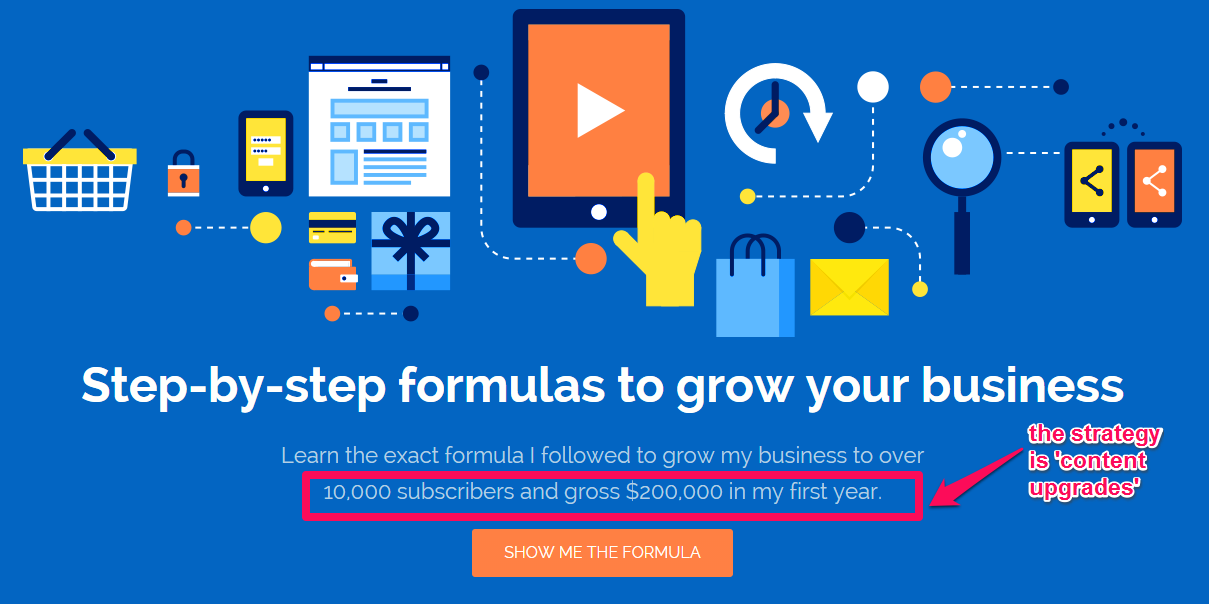
So, what is a content upgrade picture publisher 10 download for free german?
A content upgrade is a simple strategy for increasing your email subscribers by adding an opt-in subscription model within the content, not on the author profile. With this strategy, Bryan Harris has increased his email subscription rate by 62%, over double the usual 20-30% opt-in rate.
The content upgrade usually looks something like the image below, appearing within the article or blog post.
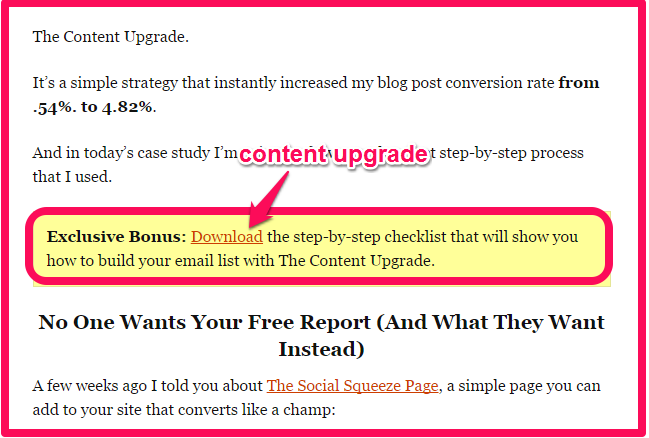
Bill Gates once wrote an article titled, “Content is King.” Almost 20 years later, having experienced the content explosion, we’ve all come to believe those words.
However, coming up with new content ideas that will make a big enough impact to generate email subscribers and customers is a tough job. A content upgrade can help by taking full advantage of existing content.
Here are a few tips to make the content upgrade strategy work for you:
i). Write a clickable and benefit-driven headline: Your headline has to be attractive for people to click and read further. Until they read your content, they can’t discover the content upgrade (usually placed after the second or third paragraph).
Some of the best headlines for pieces with a content upgrade are:
- SEO Strategy Case Study: From #6 to #1 in One Week
- 21 Examples of the Strategy That’s Changing Blogging
- Why Content Goes Viral: What Analyzing 100 Million Articles Taught Us
ii). Share a case study: A case study is relatable. More people will respond to it, because it walks readers through a step-by-step solution to their problem. In every case study you should:
- Capture screenshots to explain facts and data
- Provide actionable steps readers can take
- Make sure your data and statistics are accurate
- Link out to authoritative sites that are relevant to your topic
Personally, I’ve written more case studies than any other type of content and I’ve generated more search traffic as well. After I conduct any test in my online businesses, I share the successes and the lessons learned as a case study.
It’s not just me. A large percentage of the blog posts that I’ve read are case studies that have been upgraded for the purpose of capturing email leads.
iii). Use a relevant content upgrade module: If you’re writing a blog post on a specific topic — say, “Twitter marketing tools” — then make sure that the lead magnet (e-book, software, tool, plugin or short report) you give away is related to that topic.
For example, in the post titled “11 Ways to Turn Readers Into Email Subscribers,” Bryan Harris gives away an entire swipe file that will make your sales funnel work.

iv). Write in-depth content: Increasing your content length not only improves your search rankings, but it will also increase the perceived value of your content in the eyes of readers, as well as enhancing your personal brand.
Your case study should cover everything, from the planning to the execution and the results that you got. Leave no stone unturned. Ideally, turn your case study into a story, so that no matter how long it is, readers won’t give up on it.
The rules aren’t set in stone for the right length of this kind of content. But, if you want to increase your chances of ranking highly in Google and persuade potential clients to work with you, then make sure that your average case study length is at least 2,000 words.

v). Activation: Content marketing is all about “increasing power.” In other words, take a simple idea and make it bigger. The content upgrade is just one example of how to do this in the context of growth hacking. But, there are other examples as well.
Activation is a phase in the growth hacking pyramid.

The ultimate objective of making an idea, topic or piece of content stronger and better is to acquire a new follower or fan. How you do this depends on how many new followers you want.
Here’s an example:
You could publish a teaser article or blog post. Just like movie trailers do, a teaser article’s goal is to get your readers interested, so that when the finished product becomes available, they’ll buy it fast.
Why not approach content marketing that way? Instead of publishing a full-blown article on your topic, follow these simple tips:
- Send a custom email outreach to several experts in your chosen topic itunes kostenlosen für windows 10. Explain your goal and ask for their input on your topic or question. Let them know how their participation can generate more visitors and customers for them.
- Write your post, about 100 – 200 words.
- Highlight some of the experts who will contribute their own ideas or ask your readers to give their own contribution (i.e., suggestions or questions) in the comment box.
- Before publishing your teaser post, add a subscription box, using the content upgrade strategy above. Tell your readers/audience to subscribe, if they want to be the first to get the new post when it goes live. This is much like joining the “waiting list” for a new product.
- Once you receive all of the answers from the experts and your readers (via comments), organize and edit accordingly, incorporating their responses into a detailed post that’s optimized for both people and search engines. Aim for at least 2,000 words.
- Publish the post and let your subscribers know that the post is live.
Factors That Make Growth Hacking Effective: Several factors make it possible for growth hacking to produce strategic and sustainable growth rates. In this section, I’ll show you the major factors that you need to know about.

Note: These factors will be more effective when implemented together with content marketing and blogging.
Here are the five major factors:
1. Desirable product: Apple’s range of products are designed to appeal to end users. The iPhone and iPad caused a revolution in the electronic and mobile marketingworld. These mobile devices are popular, because they possess incredible features. As a result, users all over the world love them.
Aim to create a product like that – one with a strong built-in market full of people who think they’ll be significantly worse off if they don’t get the product, as SalesChat advises.
This is where most internet marketers get it all wrong. They piece together some articles and call it a book or they hire a developer to make an app that does exactly the same thing as ten other apps.
For growth hacking to produce the best results for you, you should ensure that your product is one of the best around.
2. Include some form of image with your content: Images are a huge factor in growth hacking success. From 2010 to 2012, I created a total of 47 infographics for KISSmetrics. Our results: the blog generated over 2,500,000 visitors and 41,142 quality backlinks from 3,741 unique domains.
According to Okdork, more people will share your blog posts when they contain visual information.

Infographics, in particular, garner a lot of shares:

3. Trends: What’s happening right now? There are so many trends that you can focus on: social media trends, marketing trends, startup trends, information marketing trends and so on.
Successful growth hacks capitalize on the then-prevailing style and platform.
How many people are talking about your topic? The term “growth hacking” itself, for example – just how popular is it?
To find out, we can quickly go to Google Trends, type in the keyword and see the graph:

4. Creativity: The ability to develop new and original ideas to fuel your business, get more users to sign up to your website and increase sales will require creative thinking. A creative person can turn obstacles around (or inside out) and find new ways to overcome them.

Most of us want to increase our capacity for creativity. According to Patch, 75% of us think we’re not living up to our creative potential videos downloaden bei facebook.
Consequently, thought becomes reality and that reality obstructs the flow of creative ideas. We get mediocre results, because even though we follow the same path as every other marketer out there, we’re not getting creative about how we do it — we’re not “growth hacking.”
If you’re a blogger or any kind of content marketer, don’t let your thoughts sabotage your creativity. You absolutely can turn things around in your business – but you have to give yourself time and space to brainstorm and map out creative strategies.
Are you struggling to drive qualified visitors to your new blog or get better email open rates? There is hope, as long as you keep bringing creativity to the table. Growth hackers don’t give up or give in. Growth hackers stick around.
Growth hackers realize that who they become in tough times is more important than the profits that they’ll make. If this is a struggle for you, read Robert H. Schuller’s classic book Tough Times Don’t Last, But Tough People Do.
A typical example: Growth hackers are creative enough to cut through obstructions and get more sign ups, leads and customers. Dropbox, for example, gave away 500MB worth of storage space with their easy-to-use referral program
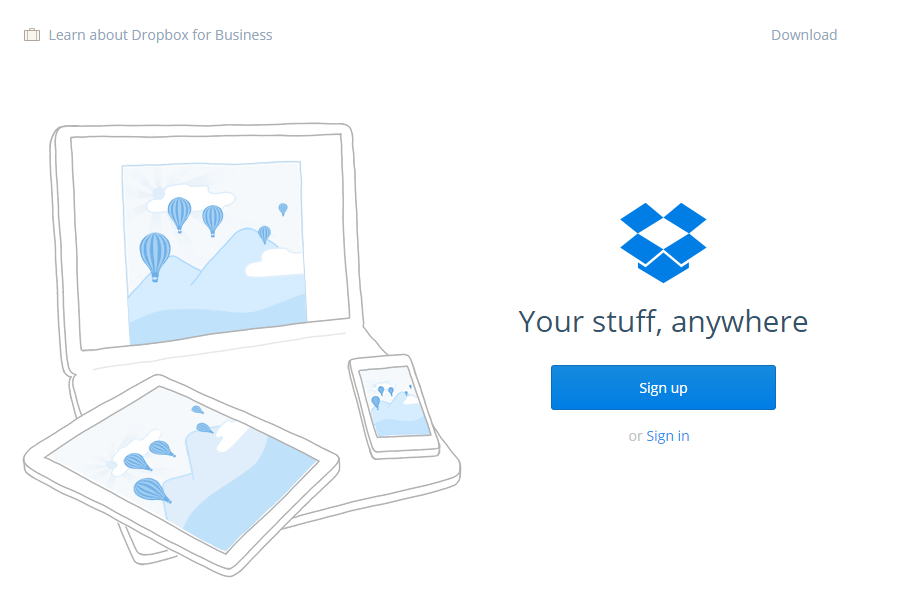
In 15 months, Dropbox grew from 100,000 users to 4 million users.

This is growth hacking. Building on groundwork that’s based on psychology and the science of consumer behavior, Dropbox found a simple way to influence users to sign up in droves.
5. Tools: If you use WordPress as your CMS (content management system), then you’re in luck. There are several plugins that can make lead generation, viral acquisition, CRM (customer relationship management) and social media marketing easier — all of which help you grow your business, which is the bottom line of growth hacking.
You can leverage these tools to help your marketing produce great results. Every content marketing strategy you initiate requires a product improvement and social engagement. This is the social engagement chart for top UK stores:

At the end of the day, growth hacking helps you get users to sign up, convert blog readers to customers and engender trust and loyalty in your customers.
Step #3: The Growth Hacker
“A Growth Hacker is someone whose true north is growth.” – Sean Ellis, Grandfather of Growth Hacking.

Aaron Ginn defines a growth hacker as
A person whose primary focus and passion pushes a metric through use of a testable and scalable methodology.
The growth hacker’s assignment is to use different techniques that are geared towards extracting insights for pulling in users. “Pulling” as it’s used here, tells us that content marketing is an integral part of growth hacking. Attract potential customers by persuading them to come to you and they’ll grow to trust you.

A growth hacker must be able to funnel new customers into the relationship pyramid, in order to reduce or totally eliminate the objections that would keep them from buying again and again.

Profile of a growth hacker: Before I show you what the profile looks like, here’s a brief on the massive growth rate experienced by start-ups: A few weeks ago, Techcrunch announced that AppVirality, an Indian startup that develops simple and feature-rich user apps, had raised $465,000 in seed funding.
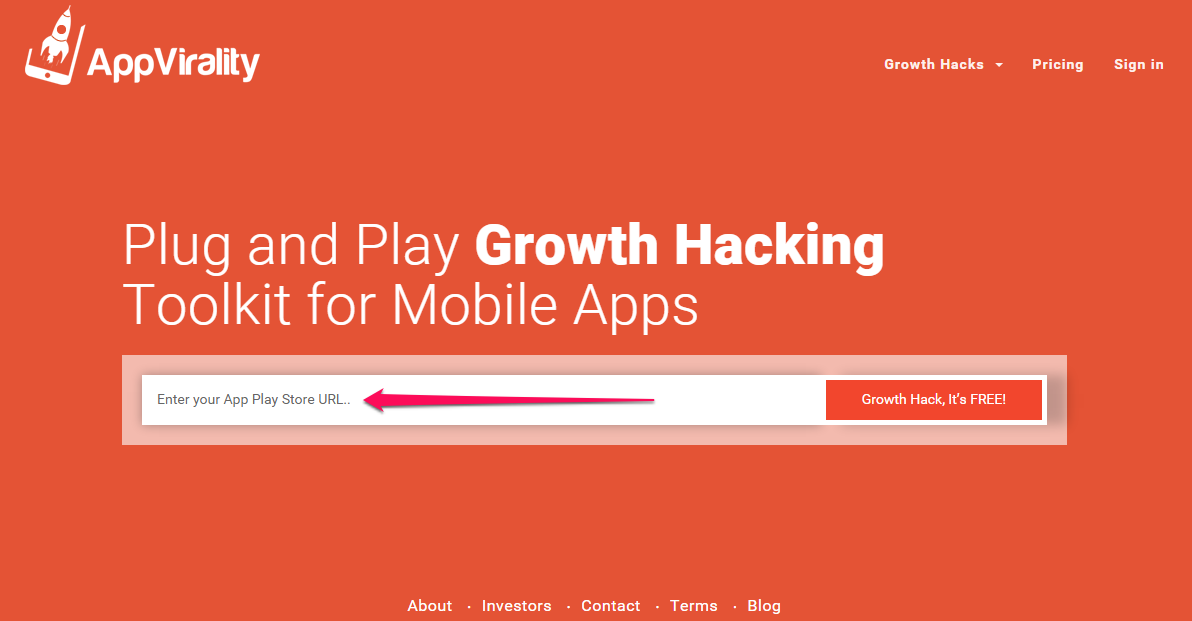
As more and more apps, tools and software are developed and used to help their efforts, growth hackers will become even more important to online media businesses as well as to tech start-ups.
Here are the skills a growth hacker should possess:
1. Team leader, not a developer: A growth hacker should be able to lead a team. The job of a growth hacker isn’t to develop or write complicated code that will get the job done. Instead, he or she has to be able to form, organize and lead a formidable team to execute the plan. A team leader leads by example.
Gagan Biyani, co-founder of Udemy and a growth hacker and business coach, said that growth hackers aren’t necessarily engineers or coders. In fact, many of the most well-respected growth hackers don’t write code herunterladen.
Yes, many growth hacks will depend on coding to become a reality. If a growth hacker can develop software and write code, that’s an advantage, but it’s not a necessity.
Personally, I’m not a programmer or app developer, but I built five multi-million dollar software companies nevertheless. It’s all tactical thinking.
2. Obsession: When you’re obsessed about something, it takes over your thoughts and completely occupies your mind.
A growth hacker needs to have this skill, because a great idea often takes time to get off the ground. If anyone ever tells you that growth hacking is a “shortcut” to growing a business quickly, they’re lying to you.
For the growth hacker, small successes compound over time. You have to be consistent with your approach.
In the meantime, be obsessed about that course or that new strategy that popped into your brain. It could change everything.
3. Strategic marketing plan: Growth marketers like to test to find out what works and what does not. This is the key difference between a traditional marketer and a growth hacker.
Almost all of the marketing tactics that make consultants the most money can be redefined and made more strategic – that’s the job of a growth hacker.
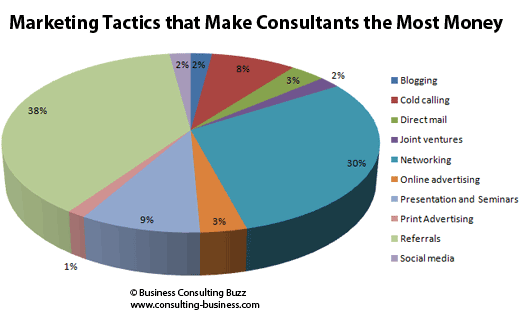
In the course of testing, they may discover viable channels to explore, thus achieving an even greater growth rate. This is just as applicable to your start-up or online business venture.
Every marketing plan should be about solving a practical problem that your audience is facing. A good example is Uber, which has experienced phenomenal growth in the U.S. and is gradually expanding to other countries.

Uber solves problems for riders in need of transportation. Just tap a button and you’ll be picked up, usually in a few minutes. Uber is a simple solution that solved a transportation challenge faced by millions of people. Within six months of Uber’s official launch in 2010, it had given over 20,000 rides.
4. Growth hackers are extremely analytical: A growth hacker must love analytics. If you can patiently study Google Analytics to learn how it works and what each metric represents, you’ll ultimately do well as a growth marketer.
Growth hackers look at the big data analytics to determine trends and draw conclusions about what that data means for the business.

Growth hackers are expected to be certain about their goals. Since their focus is always on growth, they seek to understand the analytics behind a channel, once they’ve tested it and deemed it viable.
To help you improve your ability to interpret data, you’ll need an analytical tool that will give you the best results.

Metrics, such as the lifetime value of your users, are invaluable to the growth hacker. The right analytics tool can help you automate this data analysis. Also, when you have a system in place to track your products and services, it makes your success repeatable. If you want to know the lifetime value of your customer, you can use this tool.

Differences between marketers and growth hackers: A lot of quality articles, infographics and videos have been created to answer this question. Here are two worth reading:
- The Actual Difference Between Growth Hacking and Marketing
- The Difference Between Growth Hacking and Traditional Marketing
Growth hacker funnel: What route do your customers take, as soon as they land on your site or blog? The funnel is usually large at the top and narrow at the bottom.
As you can see, in the “acquisition” stage, the funnel is pretty large, because you can use several methods (both free and paid) to send leads to your landing page amazon filme herunterladen mac. But, as you go down, the opportunities that you have to convert those leads to the next stage get smaller. The growth hacking funnel consists of 5 stages and they’re well illustrated in this chart:

Let me briefly explain each of the stages:
i). Acquisition: The typical way to acquire leads and customers online – the goal of 44% of companies – is through an email subscription box.
But, sometimes, people don’t like to see multiple forms on your landing page. I use a slightly different approach. I don’t ask for emails – I ask for the site URL:

Note: You can still use blogging, guest blogging, blogger outreach, public speaking and content marketing to reach prospective customers, by the way. All these approaches work together, ideally.
ii). Activation: This stage is where your users and customers sign up and you give them your very best customer experience. Did you know that 71% of consumers have ended their relationship with a company due to poor customer service? Don’t just acquire clients – treat them like royalty. Let them be in charge.
For example, Zappos allows their users to return any item purchased within 12 months and get a refund or replacement – no questions asked.

iii). Retention: “70% of companies say it’s cheaper to retain a customer than acquire one,” says Our Social Times.

Shopify allows first timers who are interested in designing their own online store to try out the service by signing up for a 14-day free trial period. Within this period, the user can enjoy premium features that the Shopify platform provides.
At the end of that two-week period, more people will upgrade and remain loyal customers, because Shopify treated them with respect and delivered on its promises.

Here are a few things to keep in mind, when trying to retain customers:
1. Produce top-quality content: On a regular basis, you have to produce articles, blog posts, videos, infographics and podcasts that will help users find answers to their biggest questions. Example: Unbounce’s data-driven articles.

2. Make it easy for users to find the content: No matter how awesome your content is, it has to be easily accessible. Choose a WordPress theme that puts user experience at the forefront and place your most important content above-the-fold.

3. Keep in touch: Use email marketing to keep in touch with your subscribers, sending follow-up emails and newsletters at least once a week.
This will help your users remember your name. Remember: 80% of sales are made on the 5th to 12th contact.
iv). Referral: As I mentioned earlier, Hotmail grew to over 12 million users in less than a year because of its referral structure. When it was launched, DropBox also grew its referred user base by giving away 500MB worth of Dropbox storage space for each referral.
The best prospects, customers and users you’ll ever get will come from word of mouth marketing. So, invest in it.

You could also ask your readers to share and recommend a blog post’s URL to their connections on Twitter, Facebook and other platforms. Social media sharing could make your content go viral, leading more users to discover your link, visit your blog, and join your email list or buy your product herunterladen.
Create in-depth, useful and unique content that will help your customers achieve a definite goal. If you consistently create content that serves your ideal customers, they’ll happily tell other people about your products and services. It’s that simple.
v). Revenue: When you have acquired the leads, signed them up and begun nurturing the relationship, you still have to turn a profit. Otherwise, your business will fail. Growth hacks are implemented to increase sales, both in the short and long run.
John Lee Dumas mentions top brands in his podcasts. Due in part to those podcasts, he earns more than $200,000 per month.

Podcasting may not be your preferred model and that’s okay.
Find the best way to monetize your loyal email subscribers. If they’ve been opening your emails and coming back to your blog, it shows that they’re interested in what you have to offer. Don’t disappoint them.
Learn more here: 5 Growth Hacking Presentations to Increase Your Conversion Rate
Step #4: Growth Hacking Process
The growth hacking process refers to the series of actions that a growth hacker must take, in order to grow the business. However, even though growth is the ultimate goal of the growth hacker, it’s a vague term and difficult to measure. That’s why breaking it down into smaller, achievable tasks is necessary.
Let’s consider four growth hack processes:
1. Define actionable goals
Actionable goals are definite. Whether you want to increase sales or get more email subscribers, you have to be clear and decisive. Your goal should be easily understood and achievable.
In the same way, growth hacks are better implemented when there are actionable goals to pursue. Make sure that your goals are S.M.A.R.T.
Thinking big and setting big goals are both important. However, you can see that in the examples in the image above, the goals were narrowed down. Now they’re realistic and attainable.
For example:
Broad goal: Increase email subscribers
Actionable goal: get 20 – 50 email subscribers per day
Example 2:
Broad goal: Make $10,000 per month online
Actionable goal: Make $333 per day through product sales
Example 3:
Broad goal: Increase blog traffic
Actionable goal: Double blog traffic from 100 to 200 per day
Note: Focus on the actionable goals. Broad goals will get you nowhere, because they lack definite focus.
Myemma, an email marketing solution, acquires new users because they set a simple and realistic goal, one that reflects a real need of start-ups, bloggers and marketers.

2. Use analytics to track your goals: If you want to be certain about your goals, and understand when your goals have been achieved, then using analytics is vital.Tracking what people look at on your site and for how long is no longer optional.

For effectiveness, Ranky recommends that you start tracking your goals from day one.
Use Google Analytics or KISSmetrics to gauge your daily visitors and their behavior on your site, as well as to set up advanced goals and segments.
Tracking is not only for B2C marketers, but B2B content marketers as well. Take a look at the metrics that matter to them:

Further study:
- How To Use Google Analytics: Getting Started
- How To Use Google Analytics Goals and Advanced Segments To Measure Your Online Marketing Efforts
3. Leverage your existing network: Whether you’re a start-up, blogger or content marketer, you can leverage your existing network to get an initial boost for your product, content or event devolo cockpit kostenlos downloaden.

For example, if you have 1,000 subscribers on your email list, strive to inspire them so that they will share your content. You could ask people in your network to share your content with their own tribe. This could result in a chain reaction.
Many successful digital companies make use of their existing networks. Even though they’ve set aside huge amounts of money for acquiring new customers and users, they still leverage what they already have.
A typical case study: Hotmail’s strategy relied heavily on the power of its existing user base. That strategy led to over 12 million users within 17 months. Hotmail is now called Outlook, but the growth hack strategy that leveraged the initial existing user base brought tremendous success.

Hotmail simply added a line at the end of all emails sent by its users: “P.S: I love you, get your free email at Hotmail.” The existing users sent the emails to their friends and family, many of whom also became Hotmail users.
Of course, there are many ways to drive visitors to your site and acquire new customers. Start by using what you already have.
4. Utilize A/B Tests: According to Optimizely, 87% of companies run at least one A/B split test every month. Whether you’re spending money or time (or both) on any marketing activity, you should be certain it produces results. A tiny change in the Obama campaign display ad made a huge difference.

One of the key reasons why most traditional marketers will never be growth hackers is that they don’t test their hypotheses.
If you don’t A/B test, you might assume that your content gets more Twitter shares, but you won’t know for sure. Only the A/B test will tell you the truth. Even experts make A/B testing mistakes that can skew the final results.
Everything I do in my software businesses relies heavily on split testing. I test headlines, CTA buttons, bullet points, images, background colors, font face, short and long copy … everything.
Buffer App shows you how images impact tweets. But, without A/B testing, it would be impossible to know what works.

Check out these articles to get started with A/B testing:
- How To Run Your First A/B Test To Find Your Winning Variation
- A Beginner’s Guide To A/B Testing – Introduction
- The Ultimate Guide To A/B Testing
Success story: SimCity conducted A/B testing and used the data to sell over 1.1 million copies of their video games in the first two weeks. Fifty percent of the sales were actually digital. How did they achieve this significant growth rate? Strong A/B testing.
Here’s the original landing page:

The Variation:
The variation that was tested simultaneously with the original drove 43.4% more purchases, because the promotional offer from the page was removed altogether.
It shows that sometimes, when people want to buy a product they love, they don’t really care about incentives or rewards. They’re eager to purchase. Here’s the variation:

As you can see, even small changes or tweaks can lead to increased sales.
Step #5: Growth Hacking Examples
Several digital companies and start-ups are fully involved in growth hacking. Have you ever wondered how Pinterest got so big, within a short period of time? I was surprised to learn that users spend more time on Pinterest than on other social platforms.

Growth Devil documented that by October 2013, just three years after it was first launched, Pinterest had signed up over 70 million users and 500,000 business accounts. The reason may well be that once you log into Pinterest with your Facebook account, Pinterest connects you to your Facebook friends who are also active on the site.
PayPal, Zapier, Qualaroo, YouTube, Airbnb and several other companies have used and continue to use growth hacking techniques to grow their user base and their bottom lines herunterladen.
To see more growth hacking examples, read:
- 9 Iconic Growth Hacks Tech Companies Used to Boost Their User Bases
- 28 Clever Growth Hacking Examples
Conclusion
Are you having a difficult time attracting new customers? Remember that growth hacking is a proven strategy that you can use to cut through obstructions, attract qualified leads, nurture your customers and retain them.
I think it’s time that online business owners, content marketers and bloggers start using growth hacks to define their audience and create content that users want.
Do this and you’ll start to dominate your niche through selfless marketing that focuses on your customers and their needs.
Looking at the demand for growth hackers in every business model, perhaps you’ll agree with me that standing out with useful content is the only way to scale and beat the competition.
What other growth hack techniques have worked for you or someone you know?



